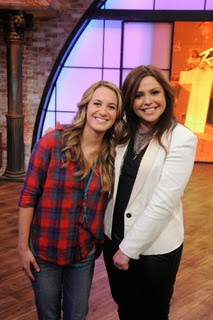My daughter’s catering business is taking off in Wilmington, NC. It helped to get publicity from winning Rachael Ray’s Great American Cookbook Competition, recognition from local magazines and newspapers and from a growing list of satisfied customers writing reviews on Yelp. Often she will ask me for advice on how to price out work for a custom cooking class or a private dinner.
We talk a lot about pricing because it’s a clear signal to someone of the value they are buying. If I show you two bottles of wine, one at $10 and one at $30, you immediately make an assumption that the $30 wine is of better quality and you’ll enjoy it better. Of course, this is part of the psychology of pricing and expectation. Ironically, the majority of wine consumer will prefer the taste of a $10 wine in a blind taste test.
I like to share with Fanny how a small increase in her pricing can have a big impact on profitability. And, key to this is to understand what people really want to purchase. What job are you really being hired to do? Getting the pricing right is an important step in marketing your brand.
Sometimes people hire a caterer to impress their friends, or to have an excuse for a social engagement or purely for the entertainment value. Food might take a back seat as long as it meets basic needs. In some cases, it’s all about the food and that’s the focus of why they want to bring you in their home.
Here are four tips on pricing for small businesses to consider that apply to caterers, accountants or anyone marketing a product.
#1 Get them to name a number first: Can you get an idea quickly from a potential customer what they have in mind for their budget. If someone is thinking of spending $250 for a private chef in home dinner, that’s a difference reference point then if they are thinking of spending $100. Information is powerful when you are establishing a price for your product or service.
If your potential customer names a price, you can then determine how you could meet their need with an offering that fits or comes close to that budget. Don’t sell me a $200 jacket when I need something to keep me warm for $20. And don’t discount the $200 to get me to buy it for $20. That’s just stupid.
#2 If they don’t give you a number: If you don’t have a price in mind from the customer, then the next step is to get as much information about what the most important thing is about what they want. For a caterer, the most important thing may not be the food. This is quite counter intuitive. It may be the entertainment value is really what they want to purchase. When you understand what will make the customer happy and why they are buying really helps to setting a price. And recognize that some customers aren’t right for you because their expectations aren’t founded in reality. They may want a catered meal for six for a price that isn’t worth your time. It’s okay to walk away from unprofitable or very low margin business unless you view it as practice.
#3 Good.Better.Best. A simple three tiered choice of options allows someone to have a limited choice where they set the level. Don’t make it too complicated. People crave simplicity not pages of choices. Chipotle has been wildly successful in the last two years with a simple menu whereas McDonald’s has made ordering so complicated sales are down.
In the case of a caterer, my daughter adds a more expensive protein to as you move up the price per person ladder. She may also add another course or a more elaborate dessert offering. But the trick is to make it easy to choose and have some distance from each price.
So the good level might be $50 per person, The better level might be $110 per person and the best level might be $200. What most people will do is settle in the middle so you want that to be a profitable price point for what you are doing. And, when the best level is almost double the price, you need to triple the value of what they receive. The $200 per person is also an aspirational price level. When someone chooses $110 level per person, they are impressed that this caterer also has clients who pay $200 per person. That’s why Lexus allows you to buy a $30,000 version of their brand or a $160,000 version too.
Another clever pricing tip is to put an asterisk next to the most popular choice. As Robert Cialdini discusses in his great book on Influence, social proof helps guide customer’s decision. So the popular choice becomes the safe choice to choose.
Another clever pricing tip is to put an asterisk next to the most popular choice. As Robert Cialdini discusses in his great book on Influence, social proof helps guide customer’s decision. So the popular choice becomes the safe choice to choose.
#4 Always over deliver. No matter what the job, find some way to do something the customer didn’t expect that adds value and is appreciated. A recent cooking demonstration on three appetizers from around the world, included a free pre-lesson snack that wasn’t in the price. It was a little gift from the chef that was unexpected and added to their appreciation of her work. Always find something that is extra to make people feel they got real value for their money. Fanny could have brought flowers for the hostess or offered a signed copy of her cookbook as a gift, but over delivering provides people an added reason to talk about my daughter’s catering company.
Pricing should be a critical part of the packaging and marketing of your brand.
The better you understand your total costs, the easier it is to price something. How much you should charge is driven by what the customer expects to pay and the value of that customer to you. Don’t undersell the price of your product or service. You only need one customer at the right price versus several at the wrong one. And a small increase in the cost goes a long way to improving profitability.
How do you go about pricing your offerings? I’d love to hear more in the comment section.
~~~~~~~~~~~~~~~~~
Need help sorting out your pricing strategy? Give me a call through Clarity and I can help you cash in.





